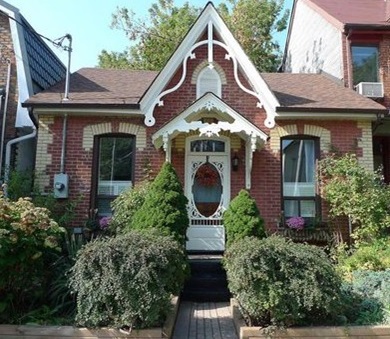Come and explore Toronto’s Riverside neighbourhood, rich in architecture, culture, heritage, and art. On this self-guided tour you’ll learn about the many eras and styles of architecture Riverside houses, representing over 100 years of Canadian history. Get ready to walk or wheel to explore Toronto’s Riverside:
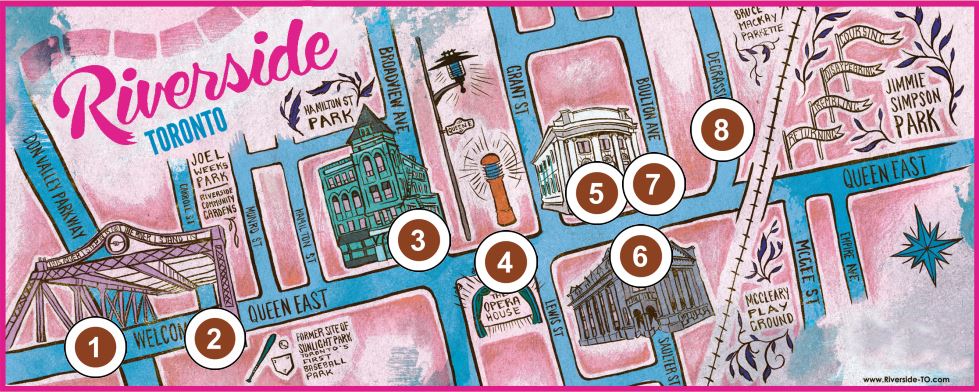
STOP 1: The Riverside Bridge
(Queen St East between River St & Davies Ave)
Officially called the Queen Street Viaduct, the structure was first built in 1803 as a wooden bridge, which washed away several times. In 1911, the bridge was updated to the permanent steel truss structure you see today with materials imported from England. Eldon Garnet and others contributed their artistry to the bridge in 1996, “This River I Step In, Is Not The River I Stand in”. The art references the Greek Philosopher Heraclitus’ notion that you cannot step in the same river twice. Since 2015, thanks to the Riverside Gateway Bridge Project, the bridge and art have been illuminated nightly.
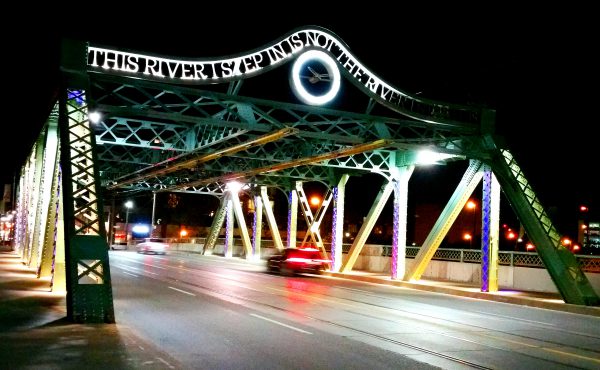
STOP 2: The Smith Block
(639-655 Queen East)
Originally built as a block of nine properties – a grand central hall flanked on each side by four units – the remaining six properties of the former Smith Block all retain a significant amount of their Richardsonian Romanesque design elements, including decorative brickwork and arches and upper-level arched windows, along with many of the building’s original stone details. The properties were designated as being of ‘heritage and cultural value’ by City of Toronto Council in November 2017.
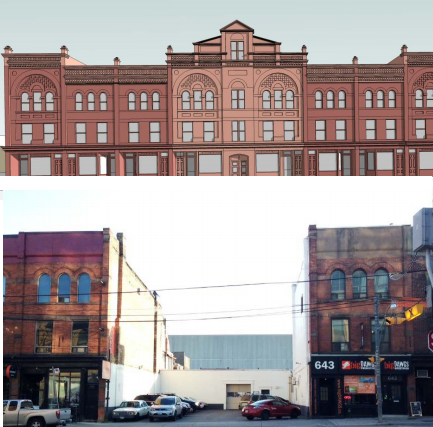
STOP 3: The Broadview Hotel
(106 Broadview Ave)
Originally built by Archibald Dingman in 1891 as a Romanesque-style hall for public gatherings, ‘Dingman’s Hall’ underwent a 1907 ownership change and converted to rooming houses for men working in factories or on the rail lines. In the 1980s-2014, the building fell into disrepair as Jilly’s strip club with rooms above. In 2014, the original heritage features of the exterior of this iconic building were restored and the interior was transformed into The Broadview Hotel, adding a rooftop patio with the best views of Toronto’s skyline. Today this property remains an excellent example of the Richardsonian Romanesque Style with original sandstone, brick and terracotta composition, the richness of detailing (e.g. panels with decorative reliefs), and a rare pyramidal tower at the top with dormer windows.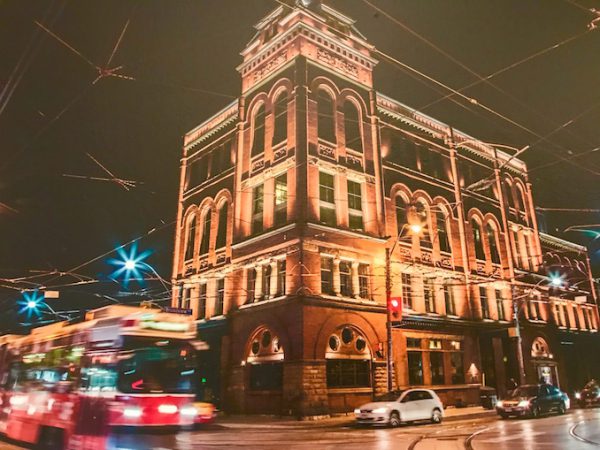
STOP 4: The Opera House
(735 Queen St East)
when it opened in 1909, the building at 735 Queen St East was an Edwardian vaudeville stage called La Plaza Theatre. As films eclipsed vaudeville, the building became a cinema. At the time, the three-storey red-brick building contained residential apartments on the second and third floors and shops on either side of the entrance that faced Queen Street East. Patrons entered the theatre through a narrow foyer, which led to a small inner lobby. As multiplexes made large single screen venues no longer viable as cinemas, the venue shifted focus to the performing arts. In 1989, under new ownership, it became The Opera House – one of Toronto’s premiere venues for live music and shows – and underwent facade improvements in 2015 to achieve today’s look and feel, and added The Opera House Grill and patio on its west side.
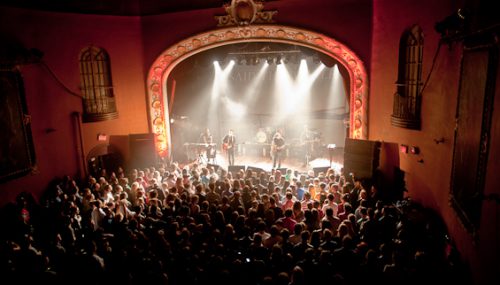
STOP 5: Stephan Caras Int’l Headquarters
(744 Queen St East)
Operated as the headquarters and couture fashion house of internationally renowned Canadian designer, Stephan Caras, the structure was originally built in 1905 as the Canadian Bank of Commerce. The property was historically designated by the City of Toronto in 1985. The building is of Neo-Classical style and designed by Frank Darling and John Pearson – the same architects who designed the Ottawa Peace Tower of the Parliament buildings.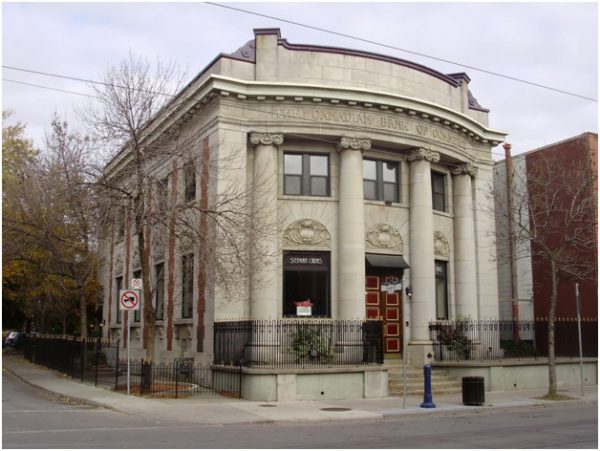
STOP 6: Ralph Thornton Centre & Queen/Saulter Library
(765 Queen St East)
Designed by E.J. Lennox, the same architect who designed Old Toronto City Hall and Casa Loma. The building was constructed in 1912 and served as Postal Station G until 1975. The building was acquired by the City of Toronto, designated of heritage and culture value in 1973, and renovated into the Ralph Thornton Community Center and the Queen/Saulter Library Branch in 1979.
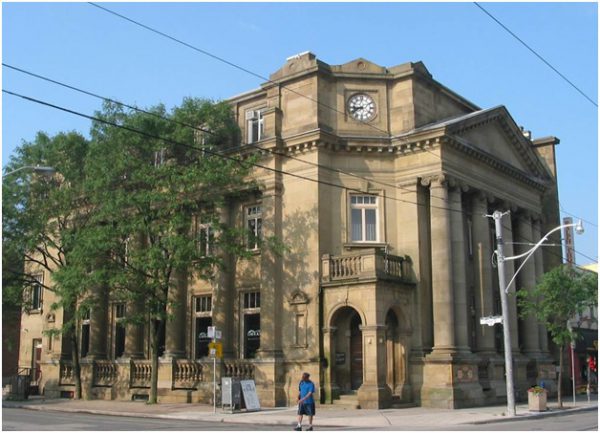
STOP 7: Poulton Block
(798 Queen St East)
Poulton Block, built in 1885, was constructed for William B. Poulton, a painter and a Mason, primarily for use by the Masonic Orient Lodge. The block was designed by Kennedy, Gaviller & Holland Architects, in Gothic Revival style. The third floor, marked by Moorish window arches, served as ‘Orient Hall’ until 1912. From 1888 to 1910, the Toronto Public Library’s ‘Eastern Branch’, its first branch east of the Don River, was located in rooms at the back of the building, which today houses Boxcar Social, a popular coffee shop & bar.
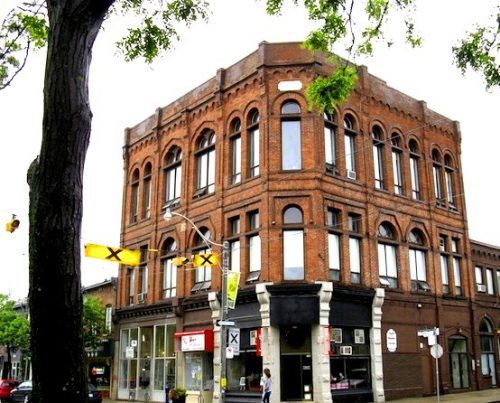
STOP 8: De Grassi Street Workers Cottages
(52 De Grassi St.)
This pictured example below at 52 De Grassi St was built originally for workers in manufacturing companies that operated around these parts. The cottage style in Toronto is a descendant of a one-storey house model with gabled roof shown at the great Crystal Palace Exhibition in London in 1851 as an example of ideal worker’s housing. These homes, innovative in their day, had windows for fresh air, separate bedrooms for children, and even indoor sanitation.
